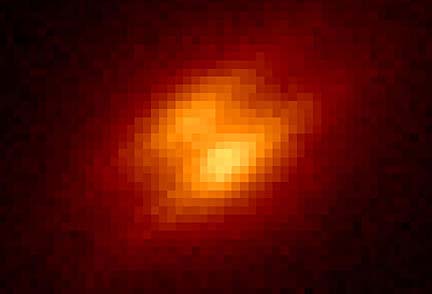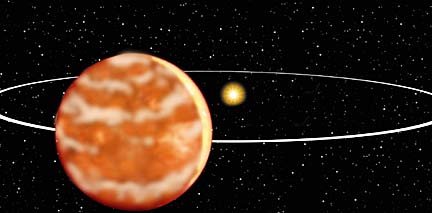


|
Hawaii scientists HILO >> A brown dwarf star orbiting a sunlike star and a disk of dust circling another star in a four-star system are two new discoveries made using the Gemini North telescope on Mauna Kea, astronomers announced yesterday.
find star, dust disk
Both discoveries will help
astronomers study stellar
and planetary formationBy Rod Thompson
rthompson@starbulletin.comImages of the objects were made using adaptive optics, which senses the twinkling of stars caused by air and cancels it, the Gemini North observatory said.
The discoveries were announced at the 199th meeting of the American Astronomical Society in Washington, D.C.

|
The brown dwarf, 55 to 78 times the mass of Jupiter, was not big enough to turn into a star but still has a faint glow.Seeing the dwarf next to the bigger star was like seeing a firefly next to a searchlight, said Michael Liu of the University of Hawaii Institute for Astronomy.
Studies of the wobble of stars had revealed the presence of large planets but almost no brown dwarfs, leading to the phrase "brown dwarf desert," Gemini said.
Liu called the linking of the dwarf with a sunlike star an "oddball pairing."
The dwarf was discovered by Gemini North and confirmed by the Keck telescope.
While astronomers think planets form from disks of gas and dust, they think the dwarf is too big to have formed that way and believe it indicates an alternate, unknown formation process.

|
Besides the dwarf 58 light-years away, astronomers using Gemini North saw one of those disks of dust in a star cluster 900 light-years away.The disk is seen edge-on and is identifiable as a dark streak of dense dust with more rarefied dust reflecting light above and below it.
Astronomers had seen such disks only about 10 times before. The disk in the star cluster is the first ever seen in a four-star system, Gemini said.
Astronomer Ray Jayawardhana of the University of California-Berkeley said the dust probably will evolve into planets in a few million years. "Thanks to these sharp images, now we can study the earliest stages of planet formation in remarkable detail," he said.
For more information, see www.gemini.edu/media.